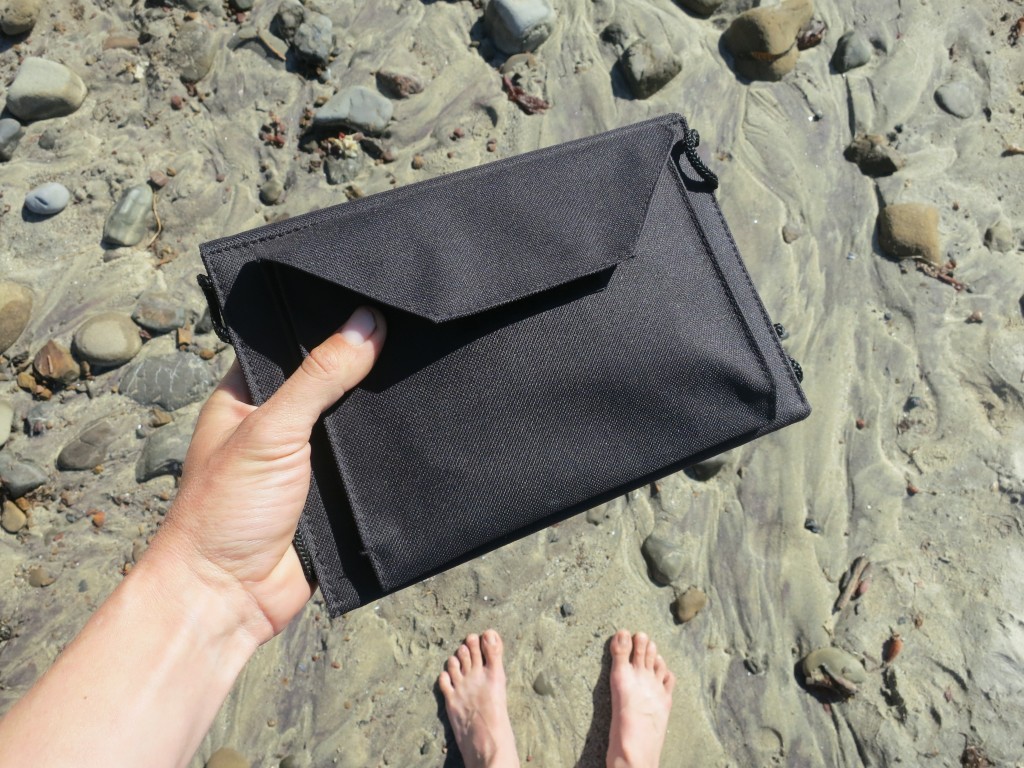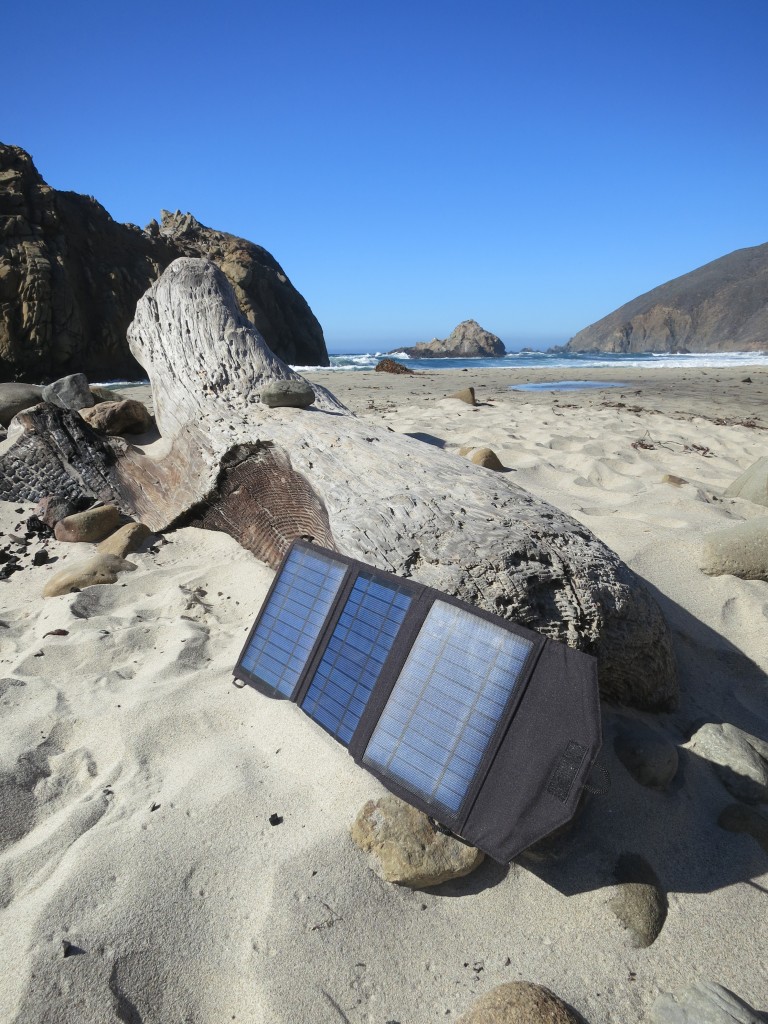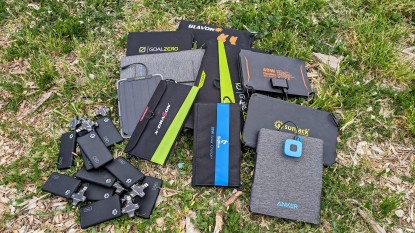Instapark Mercury 10M18U with battery Review
Our Verdict
Our Analysis and Test Results
After a thorough assessment, the Mercury 10 proved itself as a good solar panel with great value. It is big enough to do some fast charging and relatively lightweight. This year, Instapark included their own battery in a kit with the Mercury 10, but we were severely disappointed in the battery. However, the simplicity and reliability of the panel alone still hold its spot as a Best Buy winner, with the battery having only bumped up the already very low cost about $17.
Performance Comparison
Output Power
At 10 watts, this panel was on the more powerful side of the panels we tested, but not the most powerful; however, the USB ports provide 2 amps of current, which makes a huge difference when charging energy hungry tablets or newer smartphones. One port is labeled for iPad/iPhone, which on some devices denotes the port with higher amperage, but from the best of our research, it appears that both of these ports charge at two amps.
Last year, our testers were impressed by the Mercury 10's ability to hold the charging connection to our devices when we momentarily shaded the panel--this proved to be a particularly annoying problem with a few panels, which would drop the connection and fail to reconnect with our devices after someone walked briefly in front of the panel. This year, it still re-established the connection when completely shaded and then un-shaded, but it did not reset with the same ease when a cloud passed overhead. The Goal Zero Nomad 7 and the Anker 15W PowerPort Solar Lite with PowerIQ technology performed much stronger in this area.
Last, the proprietary Instapark battery. The included battery is one reason the Goal Zero Venture 30 Recharging Kit won our Editors' Choice award, but the Instapark battery ise a sore spot for the Mercury 10. This should have been a relatively high capacity battery, but we found its performance to be unpredictable. At first, it charged our iPad almost 20% in one test. In a subsequent test, it conked out after charging only 6%. In this latter test, the fan turned on and the battery felt warm to the touch.
Performance aside, we also thought the battery was big, clunky, and heavy. We much prefer the very sleek proprietary batteries to match the Goal Zero Venture 30 kit.
Ease of Use
This is an excellent panel for charging any devices that charge via USB, which is most modern personal technology items such as smartphones, tablets, many cameras, and some GPS consoles.
The Mercury 10 has a large, convenient pocket for stashing (and protecting) your device while it is charging, and keeping your cables organized while on the go. The panel has loops around the edges for hanging from trees, tents, etc. This makes it very easy to orient the panel for optimal sun exposure.
We also really like the sewn loops for hanging the panel instead of the metal grommets on other panels like the old Anker 14W panel from last year's review (which has been changed this year to sewn loops on the Anker 15W panel). Like with the Goal Zero panel, these sewn carabiner attachment points make the panel much easier to hang up, pin down, and then fold back for transport.
The velcro flap, however, that holds the panel closed when folded tends to fold over the third panel while propped in the sun. If you are easily irritated by minor design flaws, this panel may not bring you technological bliss.
Weight
This panel was one of the lightest full-fledged folding solar panels we tested. It has three decent sized panels that deliver enough power to charge a tablet with relative ease, and it only weighs a little more than some of the hard-shelled chargers with a much smaller solar panel surface area. Many of the other panels that were about as powerful were almost double the weight. Pair this with a lightweight external battery for the ultimate dream team combo in backcountry solar charging.
Portability
The Mercury 10 was one of the most portable folding panels we reviewed thanks to its excellent weight-to-panel-size-ratio. This is a very light and compact panel for the solar surface area it provides.
Versatility
This panel does not come with many adapters nor can you add them later. There is no cigarette lighter adapter capability or way to charge a laptop or device that does not have a USB cable. This means there are certain devices, such as camera battery chargers, that are not easily charged from this panel. This is a panel optimized for charging smart phones and tablets.
Though this kit includes a proprietary battery, we do not recommend the battery. It is large, heavy, shaped awkwardly for transport (bulky), and performed poorly (by overheating and losing a charge much faster than expected).
Best Application
This panel is ideal for groups with 2 to 4 people that all want to keep their smartphones and tablets charged, but it is also light enough for solo travelers on longer journeys, or for someone who has a “mobile office” with a tablet and smartphone that will be in heavy use in the field. Paired with a cheap external battery, you can charge device and battery simultaneously.
Value
Any way you look at it, the Mercury 10 is an amazing value. It is on the less expensive side of the traditional folding panels and boasts great price-per-watt and price-per-ounce ratios. This earns it our Best Buy Award.
Conclusion
If you mainly charge USB devices and want high performance first, with low weight a very close second, then this is the panel to get. Even if you are on a budget, this panel is hard to beat. The Instapark Mercury 10 is not new to our awards list. Previously a Best Buy winner, then an Editor's Choice winner, this panel continues to hold its own in the solar panel market. This year, it was edged out of the top slot by the Goal Zero Venture 30 Recharging Kit but still earns a Best Buy Award.











